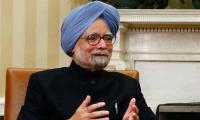India has changed drastically as the second tenure of Modi government has begun. The revocation of Article 370 that had maintained the status quo in Occupied Kashmir has now put the region into turmoil. The Indian decision was in violation of Article 1.1 of the International Covenant on Civil and Political Rights, which states: “All peoples have the right of self-determination.
By virtue of that right they freely determine their political status and freely pursue their economic, social and cultural development.” And one must remember that Kashmir is a disputed territory on the UNSC agenda.
The New Delhi-based Concerned Citizens Group (CCG), led by former Union Minister Yashwant Sinha, says in a recent report that many people believed the events starting from August 5 and the “subsequent ratification” of the government’s decisions in Indian parliament demonstrated it was end of politics in Kashmir and a process of controlling Kashmiris by force had begun. “They (Kashmiris) believe that Indian government wants to marginalise them if not annihilate them. This fear is expressed most vividly as fear of demographic change by creating new settlements for outsiders,” reads the report. “There is also fear of National Register of Citizens and how it could be used to legitimise settlers.”
New Delhi had announced that after the revocation of Article 370 and 35/A, Indians will be able to buy properties in Kashmir so that the demography of held Valley could be changed. It is the Israeli model that India is applying to create a Hindu majority in held Valley. There are widespread fears among the Kashmiris, who speak about night raids, massive arrests, extreme torture and regular beatings by the Indian armed forces which have taken over the villages in the Valley.
The Indian government has failed to deliver on its promises of better security conditions, improved governance and rapid economic development – three factors cited repeatedly for the August 5, 2019 move to revoke Kashmir’s autonomy. The Indian actions could start a new age of militancy in the valley by the locals who have now nothing to lose.
But it is the controversial citizenship law and the countrywide protests over the CAA that have shocked both the Indians and the world alike. The large scale of protests by Indian students, women, Muslim and Christian communities, Dalits, urban and rural workers, and many others have shown the fragility of Indian secularism. The violence unleashed on the protesters by armed thugs affiliated to the ruling party and the local police have outraged the world and became the front page news. Fears are rising that the BJP government is going for ethnic cleanising of minorities, especially Muslims throughout India.
The Economist recently released its annual Democracy Index which talks about the state of democracy in 165 independent states and two territories. It shows that India is a weaker democracy than it was a year ago. “Elections took place in the biggest democracy in the world, India, over April-May 2019. However, the country dropped ten places in the Democracy Index’s global ranking to 51st. India’s overall score fell from 7.23 in 2018 to 6.9 in 2019,” the report said.
The Democracy Index ranks countries based on five parameters: electoral process and pluralism, the functioning of government, political participation, political culture, and civil liberties.
A movement for demand of a new country by the CAA-affected population cannot be ruled out. This can sow seeds of permanent problems for India which has undercut civil liberties through the CAA and revocation of Article 370. The Hindu Raj is coming but it would end India’s democratic and secular credentials, whatever they were, and that would be disastrous for India.
This article reflects on key sporting moments, featuring Pakistan’s triumphs and shortcomings throughout 2024
JUIF’s legal adviser, Senator Kamran Murtaza, is also engaged in consultation process
Sit-in Action Committee decides to call a grand jirga for recovery of Muasawar Kakar
Abbasi says that neither government nor opposition sincerely intended dialogue







